Kimora has been the head hen since day one. A natural leader, she was the one who picked my pugs the day we picked our chickens from the farm, and has even challenged my alpha pug when it comes to ruling the turf. She is calm, cool and collected, and is not afraid to defend her place on the highest perch in the coop.
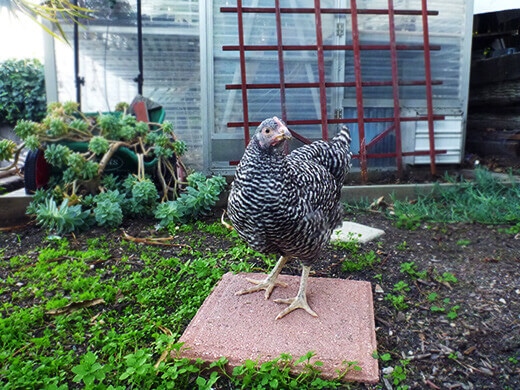
Kimora is far from being a bully, though. She loves to lead her sisters on backyard forages and never strays far from the flock. At dusk, she’s the last one to retreat to the coop. She lingers by the bottom of the ladder, making sure everyone else is safely tucked inside before she claims her favorite roost, the airy attic space.
When I wander outside, she is the first to run and greet me, eagerly awaiting whatever treat I have in my hand. She’s got the quickest beak in the west and will snatch mealworms right out from under the other girls’ beaks. She loves to follow me around the garden because as head hen, she always has to know what’s happening on her homestead.
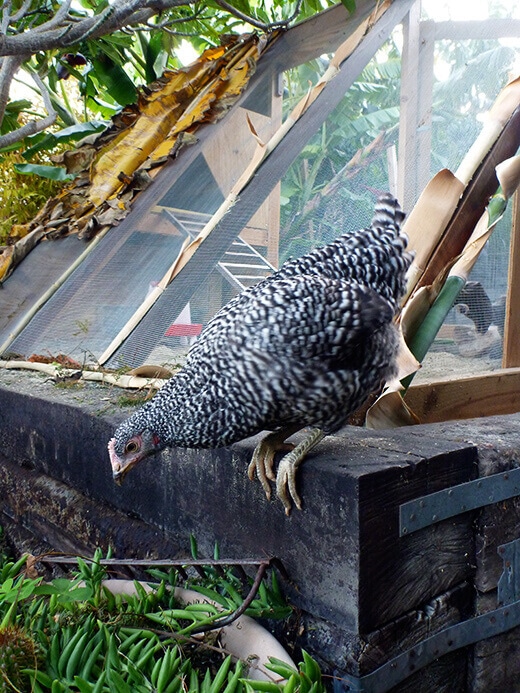
Kimora is the most curious and adventurous soul of the flock, a hen after my own heart. She loves to uncover new corners to peck and scratch. With free range of nearly 10,000 square feet, she’s determined to discover every inch of dirt, mulch and brick on her journey as a backyard chicken.
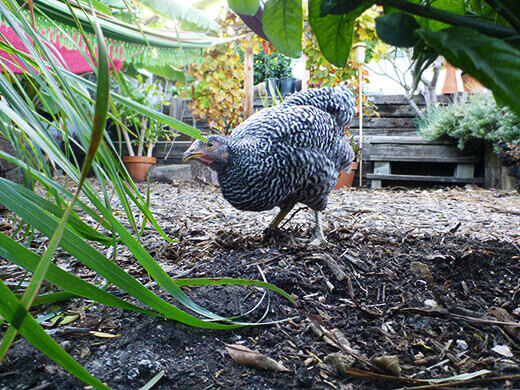
Plucky little Kimora is a Barred Rock, a dual-purpose American breed that originated in New England in the mid-19th century. The first breed to bear the Barred Rock name was exhibited at the country’s first poultry show in Boston, Massachusetts, in 1849, though its origins before that are still somewhat of a mystery.
The Barred Rock (named for its black-and-white striped feathers, a pattern called barring) was the first strain to be developed in the Plymouth Rock breed. The original Plymouth Rocks are believed to be crosses of Dominique males and Black Cochin or Black Java females, and the barred variety bears a striking resemblance to the Dominique heritage breed.
Kimora has beautiful black-and-white speckled plumage and a tuft of feathers on her butt that’s as soft as a baby chick’s.
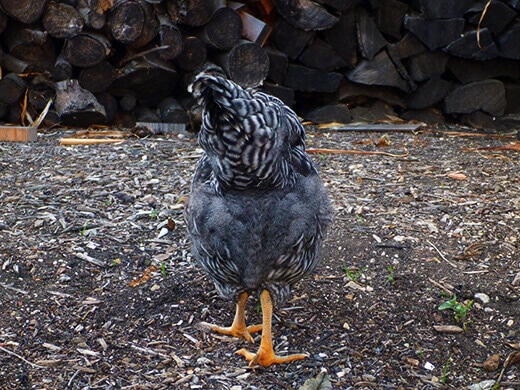
Since bringing her home a couple months ago, I’ve noticed that her comb (the little patch of skin on top of her head) has slowly grown and darkened in color, from pale pink to salmon pink (it will eventually turn red at maturity). The coloring on her long and lean legs has also shifted from a light buff to a bold yellow.
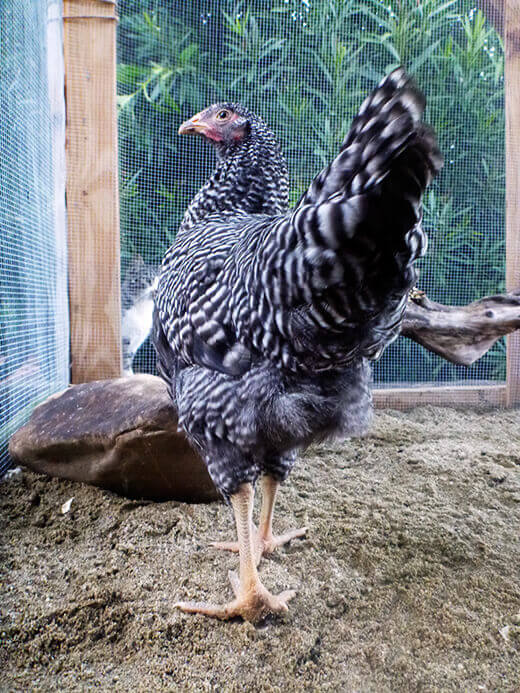

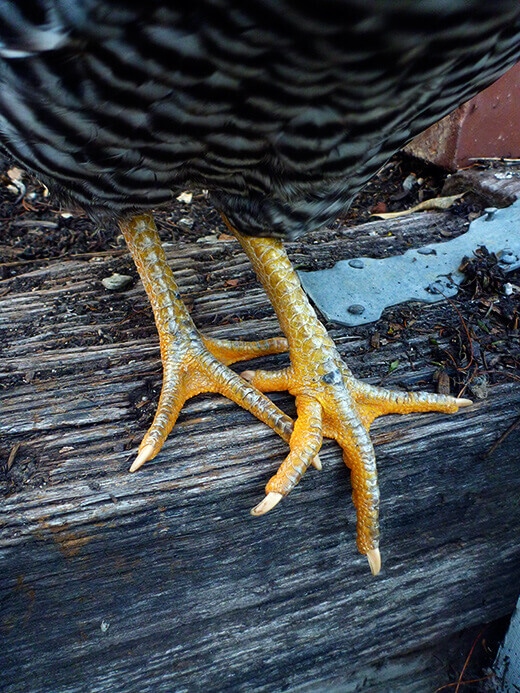
She has quite the healthy appetite (we’ve dubbed her “Choinker,” our endearing term for a chicken oinker) and I have no doubt she will give us plenty of big, beautiful brown eggs soon.


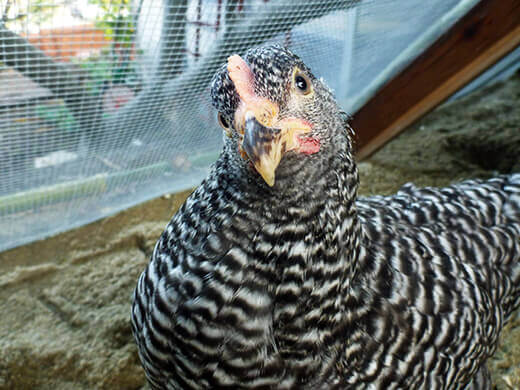













What a lovely lady – and I’m glad I’m not the only one who appreciates the fluff on their rears!
When they’re foraging in the yard, all I see are their cute little butts in the air because they’re so busy scratching at the ground!